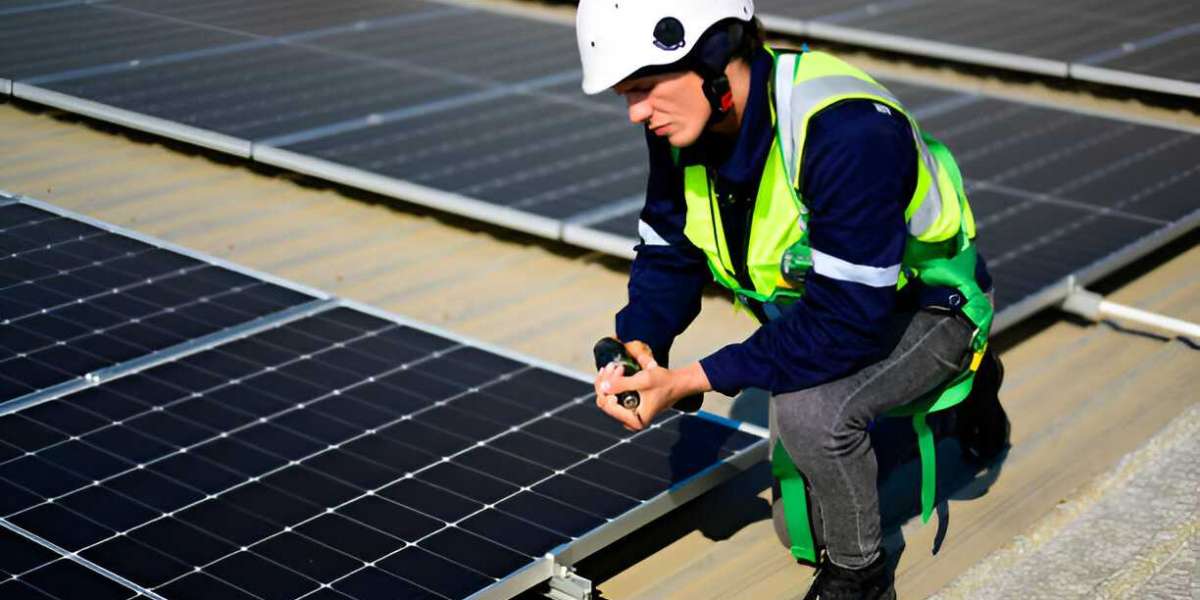As more homeowners seek sustainable energy solutions, solar panel installation services have become increasingly popular. Solar panels harness sunlight and convert it into usable electricity for homes. However, understanding how these systems connect to your home’s electrical grid can help ensure you maximise efficiency and savings. The process involves several components, including solar panels, inverters, electrical panels, and sometimes battery storage. By learning how these elements work together, homeowners can make informed decisions about solar energy adoption and optimise their energy usage.
1. How Solar Panels Generate Electricity
Solar panels contain photovoltaic (PV) cells that absorb sunlight and create direct current (DC) electricity. These cells are made of semiconductor materials, typically silicon, which generate an electric current when exposed to sunlight. The efficiency of this process depends on factors such as panel placement, shading, and the quality of the solar panels installed. To achieve maximum efficiency, solar panels should be installed in a location with ample sunlight exposure, free from obstructions such as trees or buildings. Over time, advancements in solar technology have improved energy conversion rates, making modern solar panels more effective than ever before.
2. Role of the Inverter in Solar Energy Conversion
Since most household appliances run on alternating current (AC) electricity, a solar inverter is required to convert the DC electricity from the solar panels into AC. This conversion is crucial because AC electricity is the standard type of power used in homes, making it compatible with existing electrical systems. There are different types of inverters, including string inverters, microinverters, and power optimisers, each with unique benefits. The choice of inverter depends on the specific needs of the homeowner and the solar system's design. Without a properly functioning inverter, the electricity generated by the solar panels would not be usable in a typical household.
3. Connecting Solar Panels to the Electrical Panel
Once the inverter converts DC electricity to AC, the system connects to your home’s electrical panel. This connection allows the solar-generated electricity to flow into your home’s wiring system, where it can be used to power lights, appliances, and other electrical devices. The electrical panel, often referred to as the breaker box, serves as the hub for distributing electricity throughout the home. When solar energy is available, the panel prioritises using it over electricity from the utility grid, reducing energy costs. Professional installation is recommended to ensure safety and compliance with electrical codes, as improper wiring can lead to electrical hazards or system inefficiencies.
4. Net Metering and Energy Monitoring
When you invest in residential solar installation services, you may also benefit from net metering. This system allows homeowners to send excess electricity back to the grid in exchange for credits. If your solar panels generate more energy than you consume, your utility company may compensate you for the surplus. This helps reduce electricity bills and promotes energy independence. Additionally, energy monitoring systems can provide real-time insights into energy production and consumption, helping homeowners make adjustments to optimise usage. By leveraging net metering and monitoring tools, homeowners can better understand their energy needs and maximise the financial benefits of their solar investment.
5. The Role of the Utility Grid
Even with solar panels installed, most homes remain connected to the utility grid. This ensures a stable electricity supply during cloudy days or nighttime when solar energy production is lower. The grid acts as a backup, supplying electricity whenever solar production is insufficient to meet household demand. In some cases, homeowners can participate in time-of-use programs, where electricity rates vary based on peak demand hours. By using stored solar energy during peak hours, homeowners can further reduce electricity costs. Maintaining a grid connection also ensures compliance with local regulations and provides an added layer of energy security.
6. Battery Storage for Energy Independence
Some homeowners opt for solar battery storage to maximise energy independence. Batteries store excess energy generated during the day, which can be used at night or during power outages. This reduces reliance on the grid and provides a more stable and uninterrupted energy supply. Popular battery options include lithium-ion and lead-acid batteries, each offering different levels of capacity and lifespan. While adding battery storage increases the upfront cost of a solar system, it provides long-term benefits such as energy resilience and protection against rising utility rates. Homeowners interested in off-grid living or emergency preparedness often find battery storage to be a valuable addition to their solar setup.
7. Choosing the Right Solar Panel System
Working with a professional solar panel installer is essential to ensure that your system is properly sized and installed. Factors such as roof orientation, available sunlight, and energy needs must be assessed before installation. A knowledgeable installer will help you select the best system to meet your household’s energy demands. Additionally, installers guide financial incentives, such as tax credits and rebates, which can significantly reduce the overall cost of installation. By choosing a reputable installer, homeowners can ensure their solar system operates efficiently and complies with local regulations, avoiding potential issues down the line.
8. Maintenance and Safety Considerations
While solar panel systems require minimal maintenance, periodic inspections ensure optimal performance. Cleaning the panels, checking for debris, and monitoring inverter efficiency help maintain energy output. Over time, dust, leaves, and bird droppings can accumulate on panels, slightly reducing their efficiency. Regular cleaning with water and a soft brush can help maintain peak performance. Additionally, working with a qualified electrician for safety inspections ensures the system continues to function effectively. Professional inspections can identify potential issues, such as loose connections or degraded wiring, that may impact system longevity and safety.
9. Finding the Best Solar Providers
If you are considering switching to solar energy, researching the best solar companies Maryland is crucial. A reputable company will offer quality solar panels, professional installation, and warranty coverage. Choosing the right provider ensures you receive the best value for your investment and enjoy long-term energy savings. Factors to consider when selecting a solar company include customer reviews, certifications, and financing options. Many solar companies also offer customised solutions, ensuring homeowners receive a system tailored to their specific needs. By comparing multiple providers, homeowners can make an informed decision and secure the most reliable and cost-effective solar solution.
Conclusion
Connecting solar panels to your home’s electricity system involves multiple components, including inverters, electrical panels, and the utility grid. With the help of professional solar panel installation services, homeowners can enjoy the benefits of clean and cost-effective energy. By understanding how solar energy integrates with your home’s power system, you can make informed decisions and optimise your investment in renewable energy. As technology continues to advance, solar energy becomes an even more viable and accessible solution for homeowners looking to reduce their carbon footprint and achieve energy independence.



